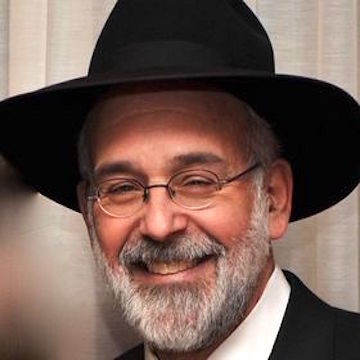Rabbi David Etengoff
336 results total, viewing 131 - 140
|
Na’aseh v’nishmah — we will do, and we will hear and understand — are two of the most celebrated words that appear in Parashat Mishpatim (24:7).
In some ways, this …
more
By Rabbi David Etengoff
|
2/19/20
|
|
This Shabbat is Shabbat Shirah, as our parasha contains the 21-verse song of exaltation sung by our forebears in response to the miracle of Kriyat Yam Suf: “And the waters returned and …
more
By Rabbi David Etengoff
|
2/4/20
|
|
Our parasha contains the mitzvah of sippur yetziat Mitzrayim, the recounting of the story of the Departure from Egypt, that is fulfilled during the Pesach Seder. The 13th century author of the …
more
By Rabbi David Etengoff
|
1/29/20
|
|
Our parasha, Vaera, contains five instances of the term, “taida — that you know,” as found in the context of the eser makkot (10 Plagues). The Ramban (Nachmanides, 1194-1270) …
more
By Rabbi David Etengoff
|
1/22/20
|
|
Parashat Vayechi is the final sidrah in Sefer Bereishit and the bridge to Sefer Shemot. Until now, our forebears were a small family of 12 tribes, yet within the first chapter of Sefer Shemot, …
more
By Rabbi David Etengoff
|
1/9/20
|
|
Who was Yosef? While some reinterpret the direct meaning of the text and teach us that Yosef was always Yosef HaTzaddik), a straightforward analysis of the beginning of Parashat Vayashev does not …
more
By Rabbi David Etengoff
|
12/24/19
|
|
Al HaNissim is recited in the Shemoneh Esrai and Birkat Hamazon on the two rabbinically-enacted chagim of Chanukah and Purim. Chanukah’s version contains the expression “am’echa …
more
By Rabbi David Etengoff
|
12/17/19
|
|
The beginning of our parasha, Vayishlach, depicts Ya’akov Avinu’s return to Eretz Yisrael and the preparations he undertook before encountering his estranged brother, Eisav. What …
more
By Rabbi David Etengoff
|
12/11/19
|
|
The concluding section of our parasha, Chayei Sharah, presents the first narrative of the Yitzchak and Rivka story. In the midst of these pasukim, we encounter a verse that conceals far more than it …
more
By Rabbi David Etengoff
|
11/22/19
|
|
The beginning of our parasha, Vayetze, describes the first steps that Ya’akov took on his journey to Haran in order to escape the wrath of his brother, Eisav, and find a fitting wife from his …
more
By Rabbi David Etengoff
|
12/4/19
|

 48.0°,
Light Rain Fog/Mist
48.0°,
Light Rain Fog/Mist 